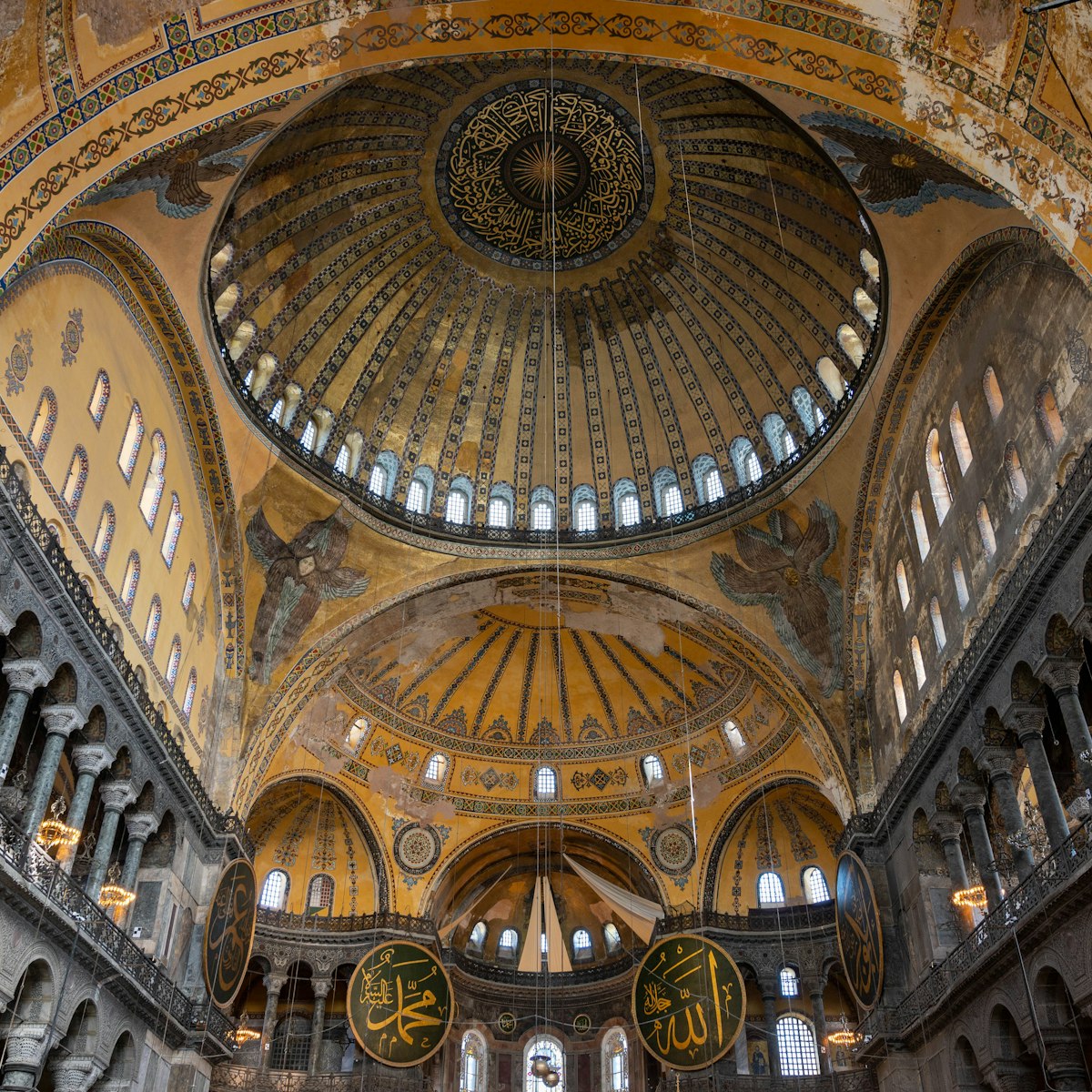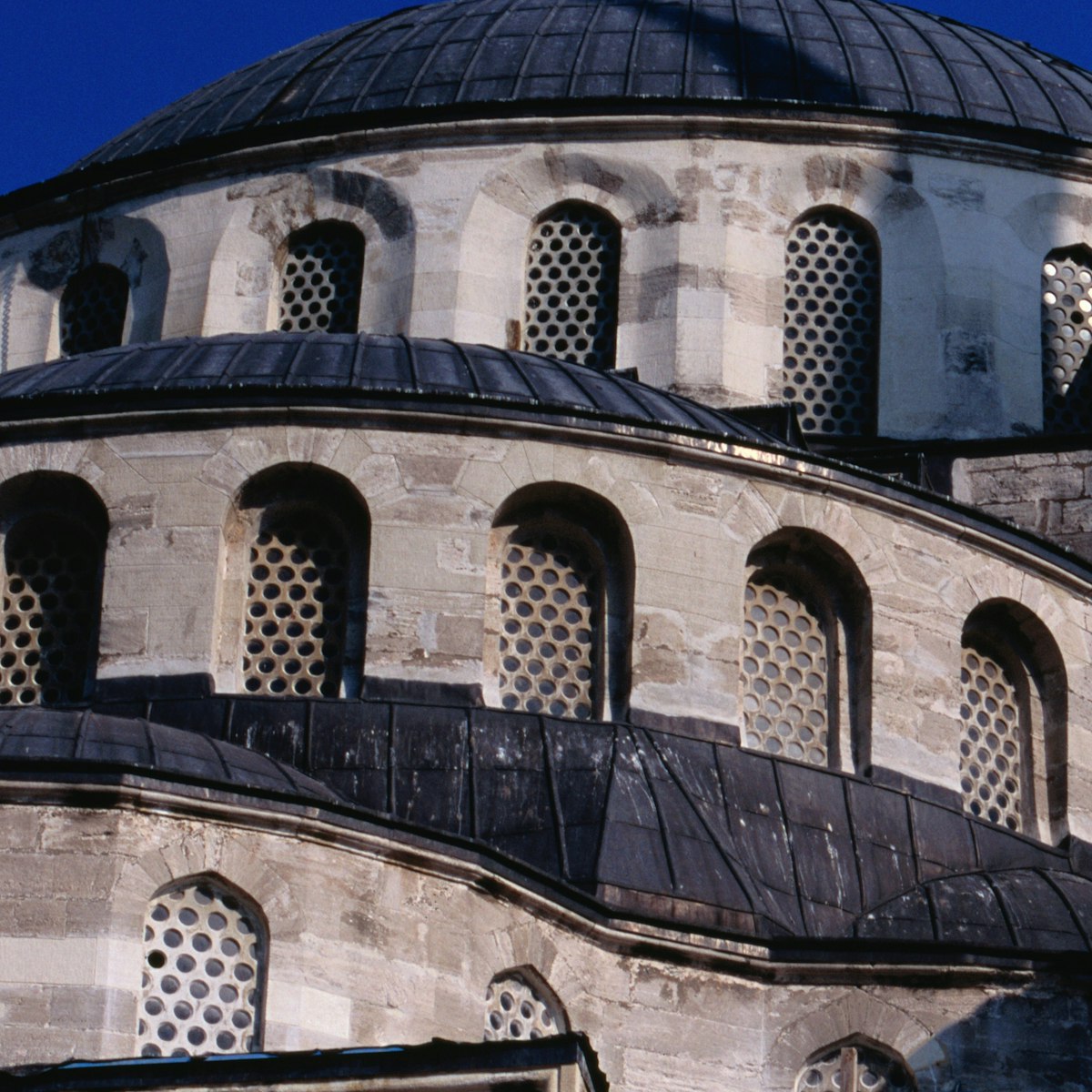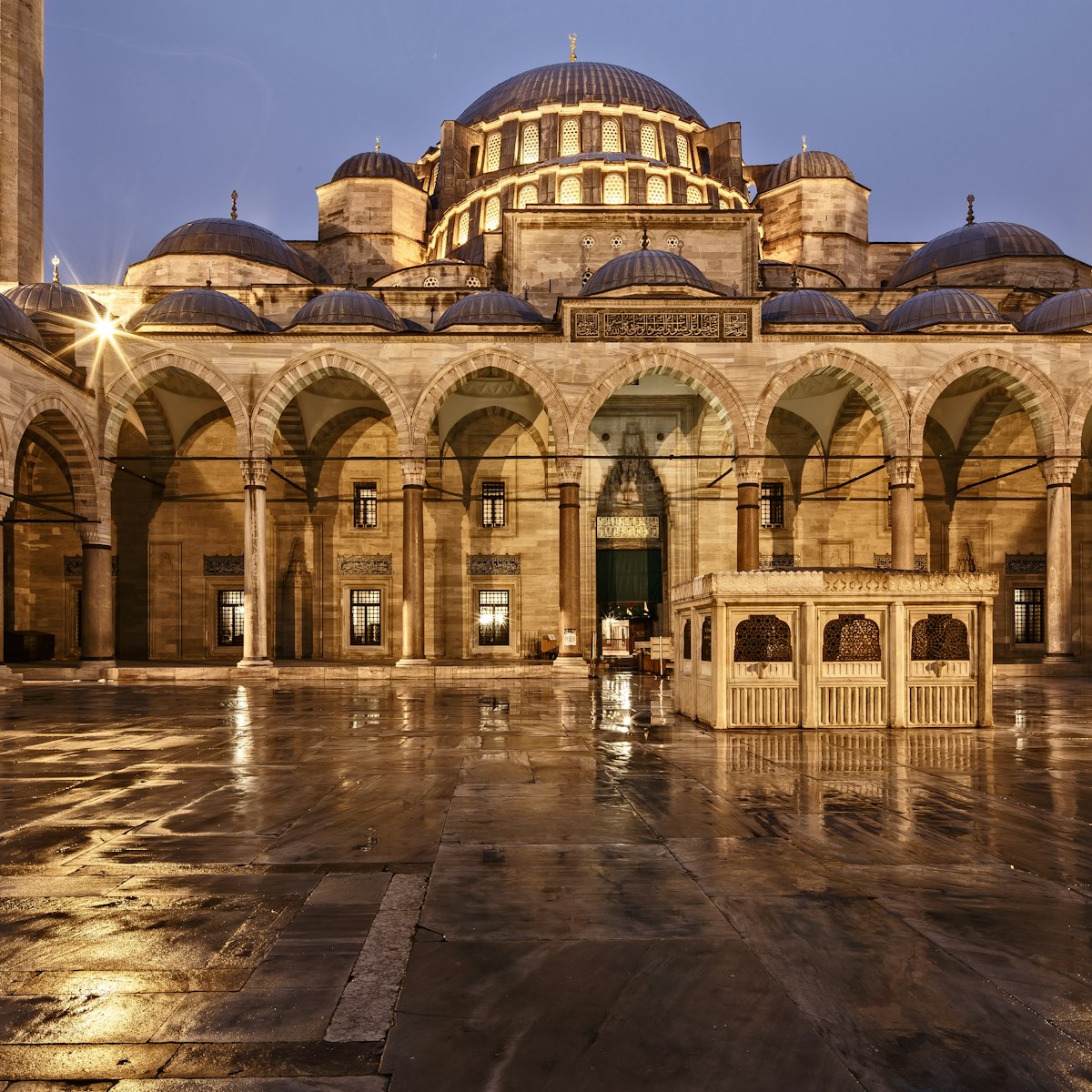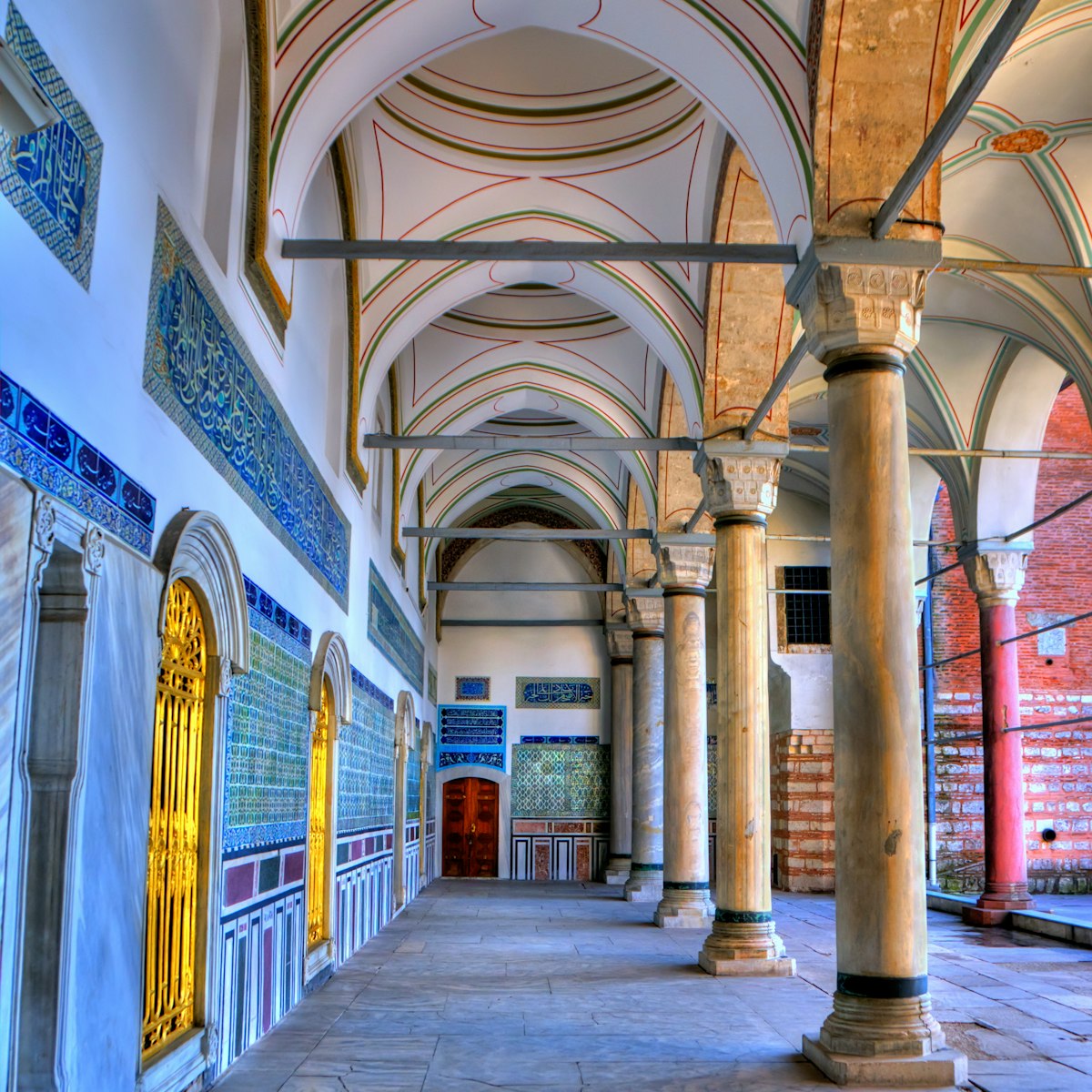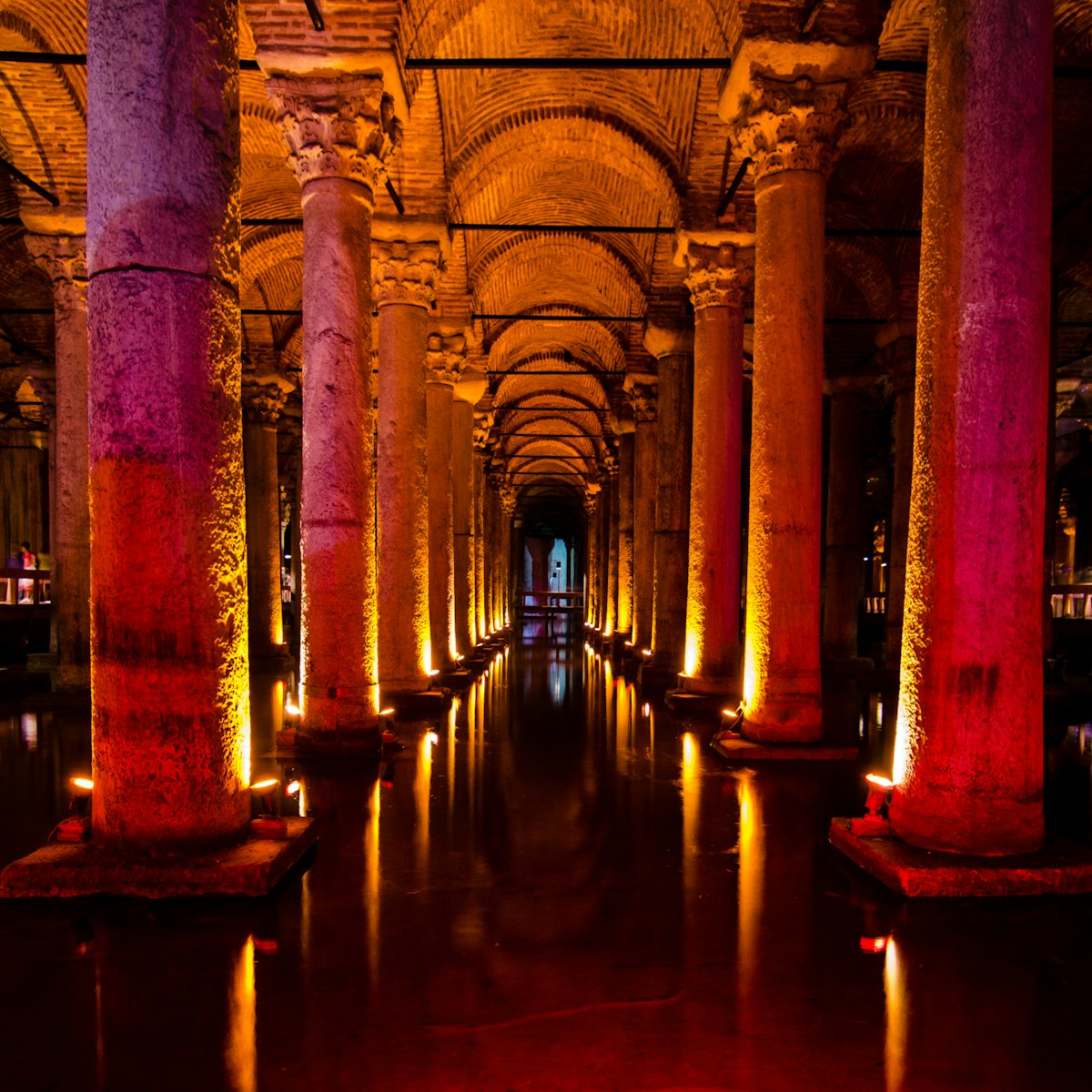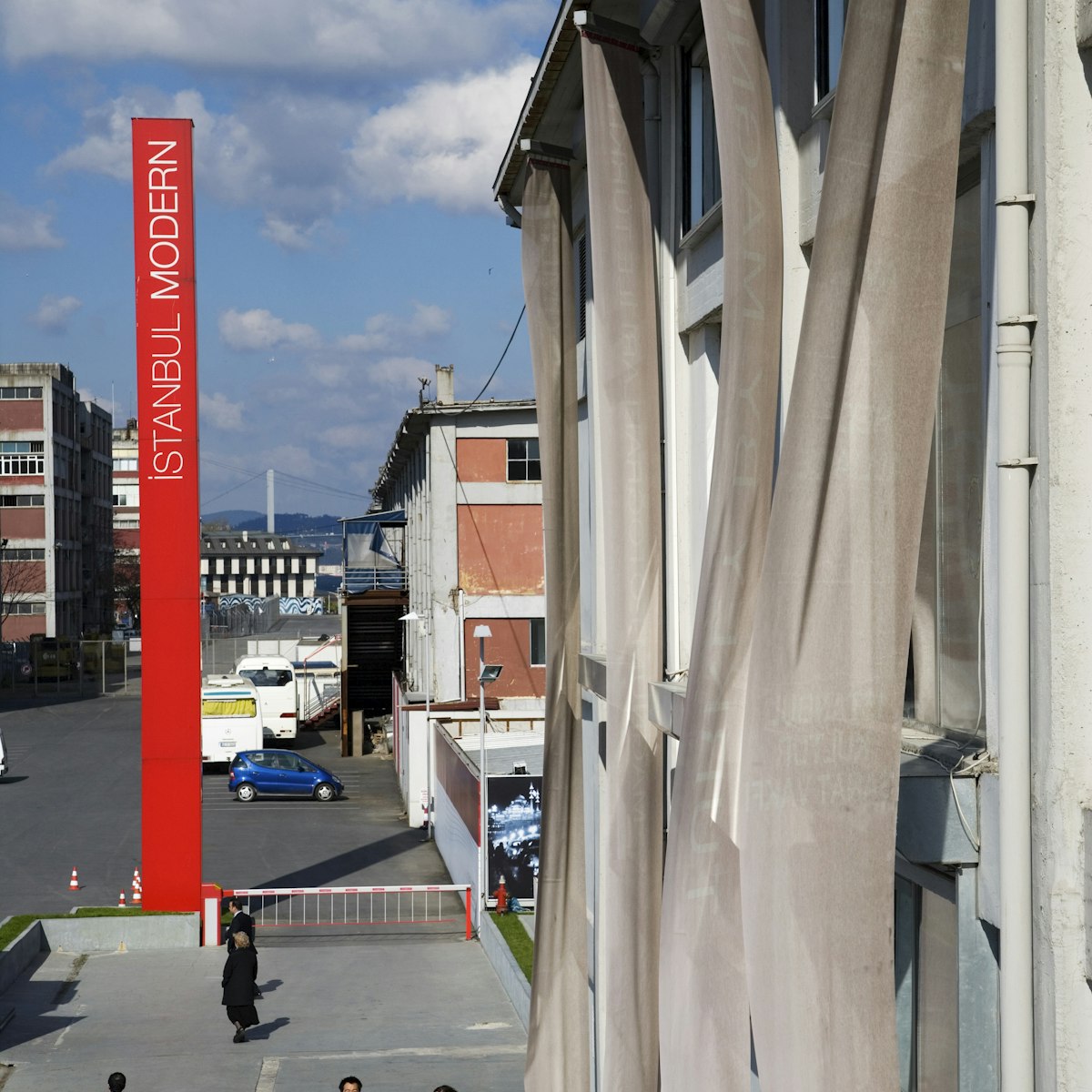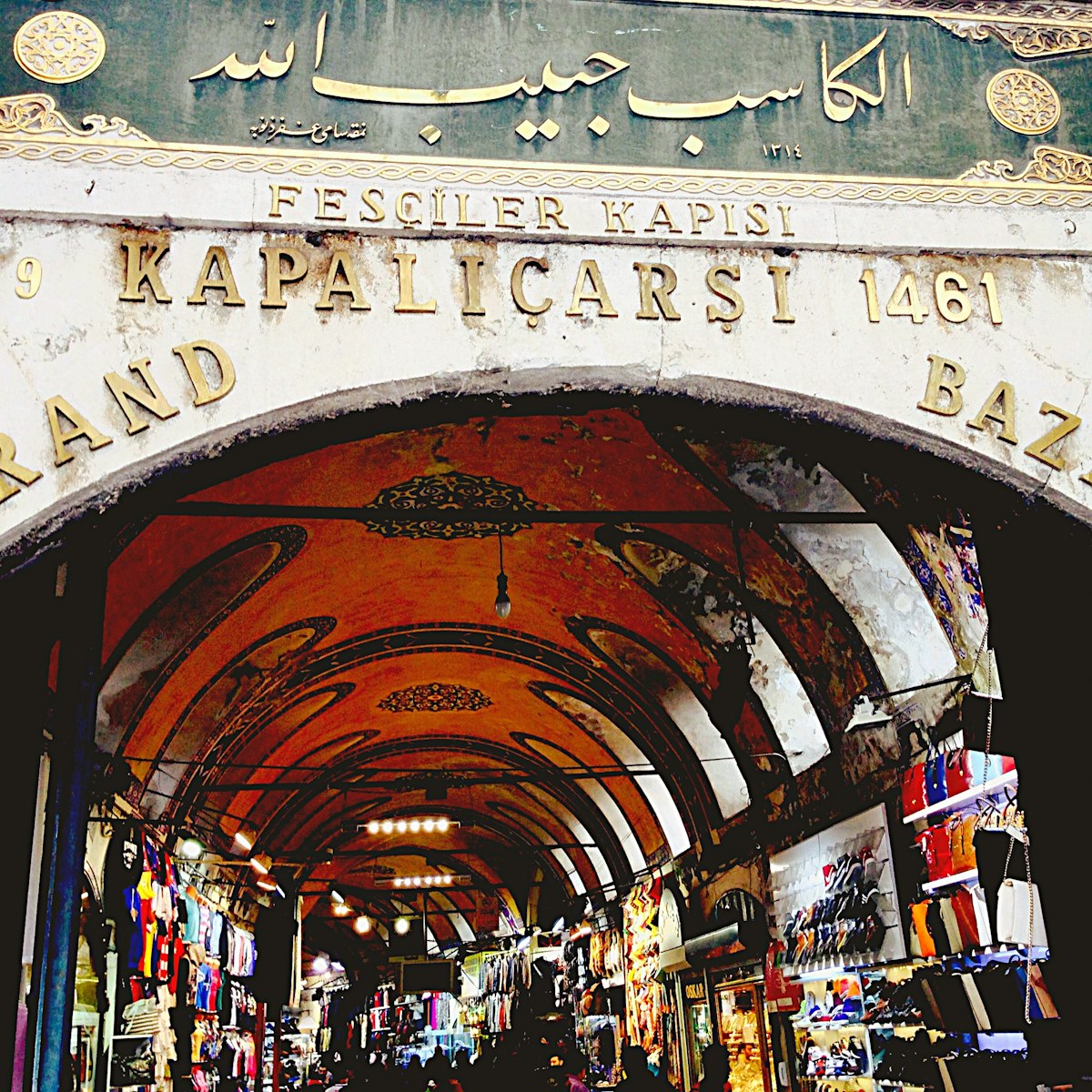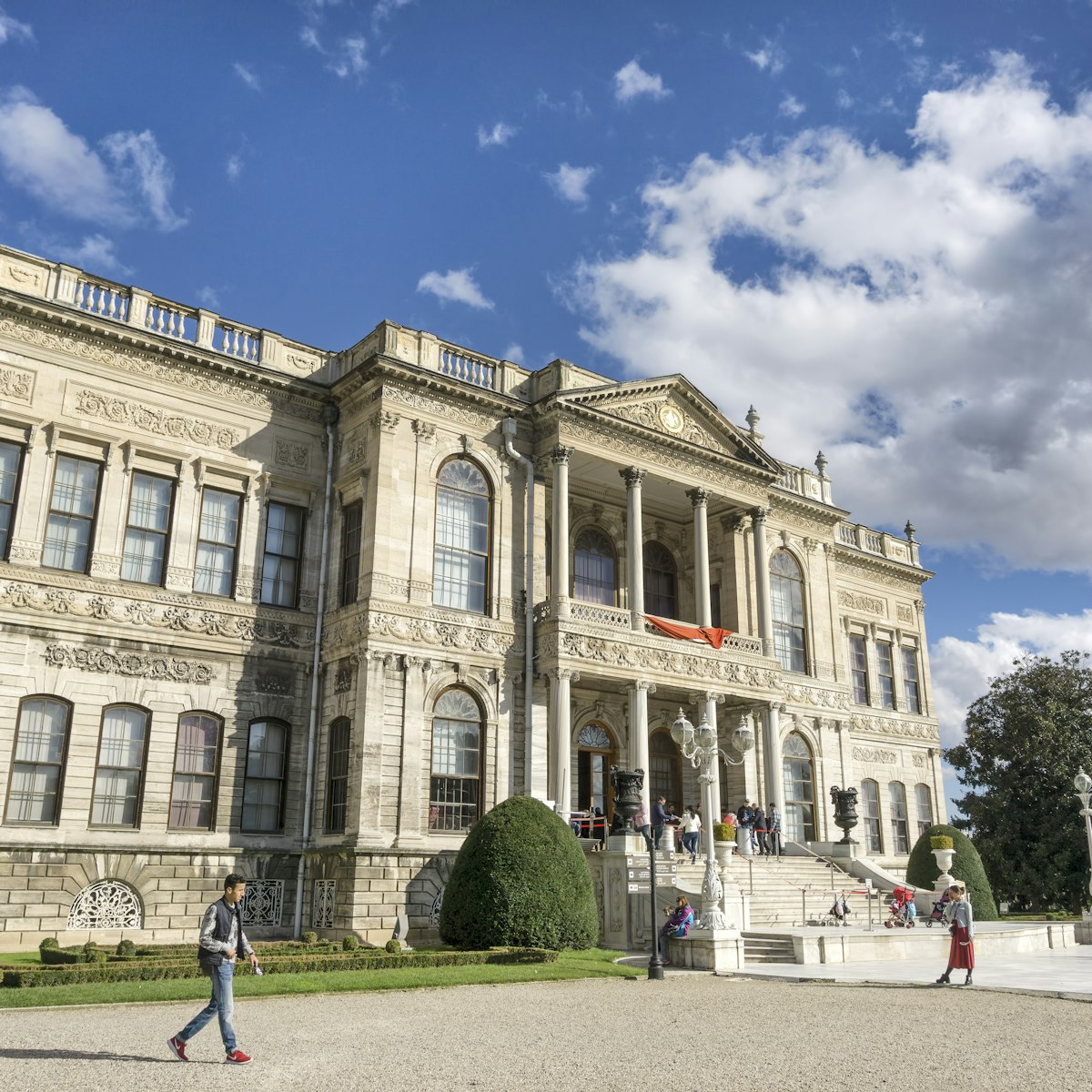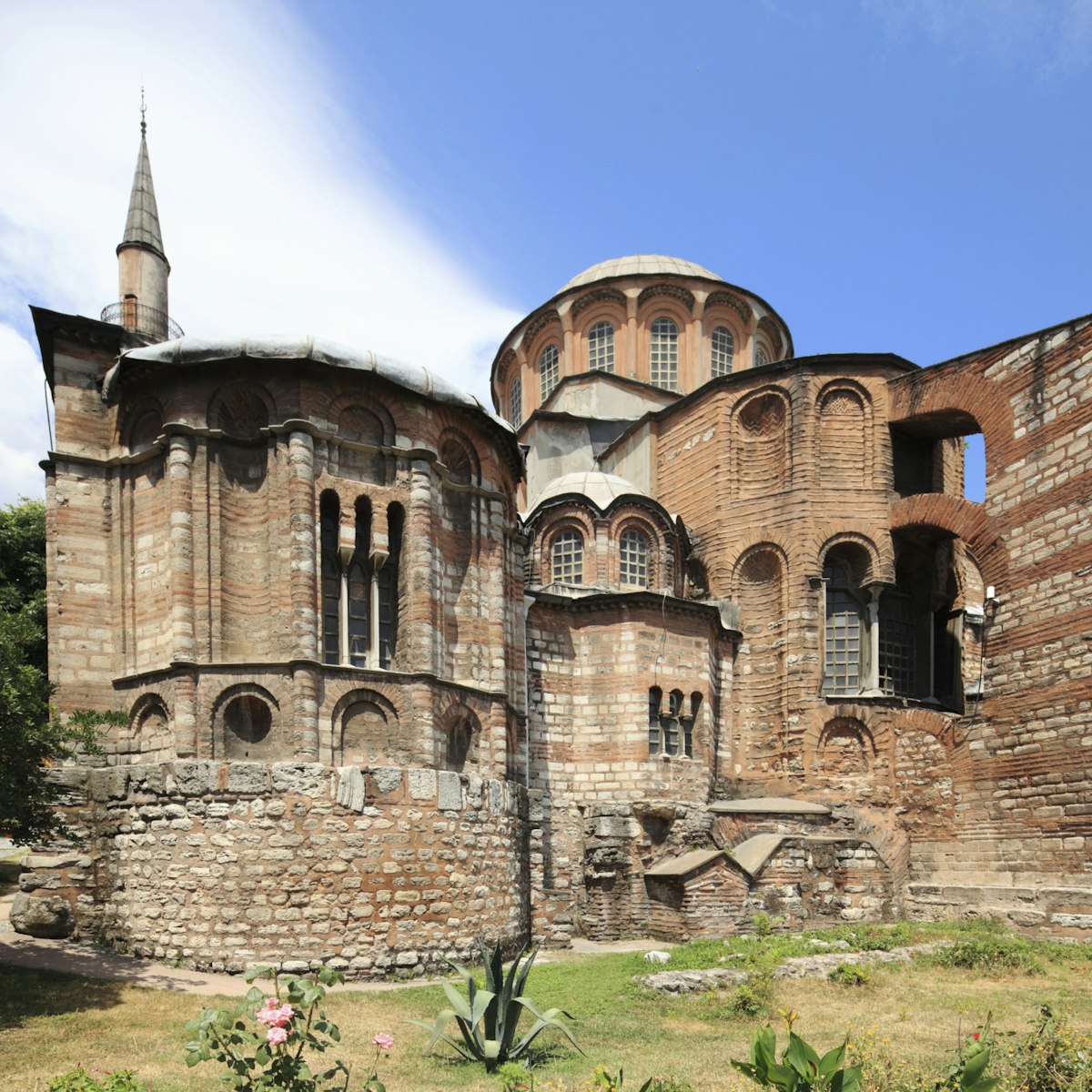
İstanbul has more than its fair share of Byzantine monuments, but few are as drop-dead gorgeous as this mosaic- and fresco-laden mosque. Nestled in the shadow of Theodosius II's monumental land walls, it receives a fraction of the visitor numbers that the famous Aya Sofya attracts but offers equally fascinating insights into Byzantine art. The mosque has been closed in stages for renovation over a number of years; check the website for details of what's open.
The best way to get to this part of town is to catch the Haliç (Golden Horn) ferry from Karaköy to Ayvansaray and walk up the hill along Dervişzade Sokak, turn right into Eğrikapı Mumhane Caddesi and then almost immediately left into Şişhane Caddesi. From here you can follow the remnants of Theodosius II's land walls, passing the Palace of Constantine Porphyrogenitus on your way. From Hoca Çakır Caddesi, veer left into Vaiz Sokak just before you reach the steep stairs leading up to the ramparts of the wall, then turn sharp left into Kariye Sokak and you'll come to the mosque.
The building was originally known as the Church of the Holy Saviour Outside the Walls (Chora literally means 'country'), reflecting the fact that when it was first built it was located outside the original city walls constructed by Constantine the Great.
What you see today isn't the original church. Instead, it was reconstructed at least five times, most significantly in the 11th, 12th, and 14th centuries. Virtually all of the interior decoration – the famous mosaics and the less renowned but equally striking frescoes – dates from c 1320 and was funded by Theodore Metochites, a poet and man of letters who was logothetes, the official responsible for the Byzantine treasury, under Emperor Andronikos II (r 1282–1328). One of the mosque's most wonderful mosaics, found above the door to the nave in the inner narthex, depicts Theodore offering the church to Christ.
Today the Chora consists of five main architectural units: the nave, the two-storied structure (annexe) added to the north, the inner and the outer narthexes and the chapel for tombs (parecclesion) to the south. In 2013 a second major restoration commenced. This ongoing process is happening in stages, and involves closure of parts of the mosque; the nave, two-storey annexes on the northern side of the building and most of the inner narthex have been completed, and work on the outer narthex and parecclesion were underway at the time of research.
Mosaics
Most of the interior is covered with mosaics depicting the lives of Christ and the Virgin Mary. Look out for the Khalke Jesus, which shows Christ and Mary with two donors: Prince Isaac Comnenos and Melane, daughter of Byzantine emperor Michael VIII Palaiologos. This is under the right dome in the inner narthex. On the dome itself is a stunning depiction of Jesus and his ancestors (The Genealogy of Christ). On the narthex's left dome is a serenely beautiful mosaic of Mary and the Baby Jesus Surrounded by her Ancestors.
In the nave are three mosaics: Christ; Mary and the Baby Jesus; and the Dormition of the Blessed Virgin (Assumption) – turn around to see the latter, as it's over the main door you just entered. The 'infant' being held by Jesus is actually Mary's soul.
Frescoes
To the right of the nave is the parecclesion, a side chapel built to hold the tombs of the church's founder and his relatives, close friends and associates. This is decorated with frescoes that deal with the themes of death and resurrection, depicting scenes taken from the Old Testament. The striking painting in the apse known as the Anastasis shows a powerful Christ raising Adam and Eve out of their sarcophagi, with saints and kings in attendance. The gates of hell are shown under Christ's feet. Less majestic but no less beautiful are the frescoes adorning the dome, which show Mary and 12 attendant angels. On the ceiling between this dome and the apse, the Last Judgement strikingly depicts this scene from the Book of Revelation in dazzling white with gilt accents, with the rolling up of heaven represented by a coiling motif surrounded by the choirs of heaven.
 Publish for free
Publish for free

 zzdtravel
zzdtravel



